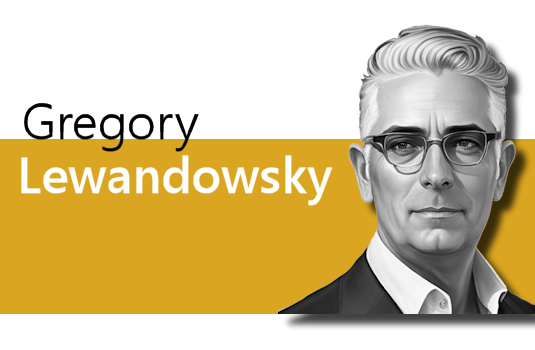
Define Your Company’s AI Risk Appetite

In this AI age, defining your AI risk appetite isn’t just about setting boundaries. It’s about discovering parts of your business you may not have thought of or really had access to before.
𝐖𝐡𝐞𝐧 𝐲𝐨𝐮 𝐚𝐬𝐬𝐞𝐬𝐬 𝐰𝐡𝐚𝐭 𝐫𝐢𝐬𝐤𝐬 𝐲𝐨𝐮’𝐫𝐞 𝐰𝐢𝐥𝐥𝐢𝐧𝐠 𝐭𝐨 𝐭𝐚𝐤𝐞, 𝐲𝐨𝐮 𝐛𝐞𝐠𝐢𝐧 𝐭𝐨 𝐮𝐧𝐜𝐨𝐯𝐞𝐫 𝐛𝐥𝐢𝐧𝐝 𝐬𝐩𝐨𝐭𝐬, “𝐚𝐫𝐞𝐚𝐬 𝐰𝐡𝐞𝐫𝐞 𝐢𝐧𝐧𝐨𝐯𝐚𝐭𝐢𝐨𝐧 𝐦𝐞𝐞𝐭𝐬 𝐞𝐱𝐩𝐨𝐬𝐮𝐫𝐞”.
You might be addressing access controls, yet you uncover vulnerabilities in how teams share data.
You could be vetting vendors, yet realize your licensing agreements may not protect your IP as well as you thought.
By looking at risks from new angles, you not only create better governance but also build a more adaptive enterprise. Here are key areas to examine as you balance innovation with protection:
𝟏. 𝐀𝐜𝐜𝐞𝐬𝐬 𝐂𝐨𝐧𝐭𝐫𝐨𝐥𝐬
You may think your systems are secure, yet overly broad admin access often allows unnecessary exposure. Are you auditing permissions regularly?
𝟐. 𝐌𝐨𝐝𝐞𝐥 𝐃𝐞𝐩𝐥𝐨𝐲𝐦𝐞𝐧𝐭𝐬
Testing AI models seems straightforward, yet unvetted solutions in production environments introduce hidden vulnerabilities. Are you using sandboxes to isolate risks?
𝟑. 𝐕𝐞𝐧𝐝𝐨𝐫 𝐀𝐠𝐫𝐞𝐞𝐦𝐞𝐧𝐭𝐬
Vendor selection might feel routine, yet overlooking licensing or patent risks can lead to costly disputes. Are you aligning contracts with your risk appetite?
𝟒. 𝐒𝐡𝐚𝐝𝐨𝐰 𝐈𝐓
You may think innovation thrives on flexibility, yet teams working independently often create redundancies and silos. Are you centralizing oversight to align efforts?
𝟓. 𝐆𝐨𝐯𝐞𝐫𝐧𝐚𝐧𝐜𝐞 𝐆𝐚𝐩𝐬
Compliance might seem manageable, yet weak documentation or monitoring leaves you exposed to regulatory and security failures. Are you tracking and securing everything properly?
𝐀 𝐍𝐞𝐰 𝐏𝐞𝐫𝐬𝐩𝐞𝐜𝐭𝐢𝐯𝐞, 𝐀 𝐒𝐭𝐫𝐨𝐧𝐠𝐞𝐫 𝐄𝐧𝐭𝐞𝐫𝐩𝐫𝐢𝐬𝐞
Risk appetite isn’t just about limits; it’s about understanding. By asking the right questions and looking at your business from different perspectives, you build more than governance; you build resilience. The more you explore, the better equipped you are to lead your enterprise confidently into the future.
“𝑊ℎ𝑒𝑛 𝑖𝑛𝑛𝑜𝑣𝑎𝑡𝑖𝑜𝑛 𝑔𝑟𝑜𝑤𝑠 𝑖𝑛 𝑡ℎ𝑒 𝑠ℎ𝑎𝑑𝑜𝑤𝑠, 𝑖𝑡’𝑠 𝑛𝑜𝑡 𝑟𝑒𝑏𝑒𝑙𝑙𝑖𝑜𝑛, 𝑖𝑡’𝑠 𝑎 𝑐𝑎𝑙𝑙 𝑡𝑜 𝑚𝑎𝑘𝑒 𝑦𝑜𝑢𝑟 𝑠𝑦𝑠𝑡𝑒𝑚𝑠 𝑏𝑒𝑡𝑡𝑒𝑟. 𝐺𝑜𝑣𝑒𝑟𝑛𝑎𝑛𝑐𝑒 𝑖𝑠𝑛’𝑡 𝑎𝑏𝑜𝑢𝑡 𝑐𝑜𝑛𝑡𝑟𝑜𝑙; 𝑖𝑡’𝑠 𝑎𝑏𝑜𝑢𝑡 𝑒𝑛𝑎𝑏𝑙𝑖𝑛𝑔 𝑝𝑒𝑜𝑝𝑙𝑒 𝑡𝑜 𝑖𝑛𝑛𝑜𝑣𝑎𝑡𝑒 𝑟𝑒𝑠𝑝𝑜𝑛𝑠𝑖𝑏𝑙𝑦.”
————————————————————————
𝗡𝗼𝘁𝗶𝗰𝗲: The views within any of my posts or newsletters are not those of my employer or the employers of any contributing experts.

 - by
- by





